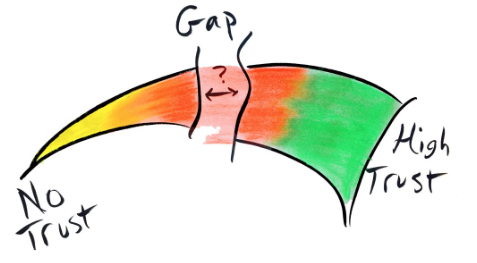How SaaS and Other Hyper-Growth Companies Create Predictable Revenue
Authors: Aaron Ross and Jason Lemkin
In my last reflection I talked about the focus of my reflection: addressing are Ross and Lemkin’s Seven Ingredients to Hyper-Growth.
The first ingredient is Nail the Niche (Part 1). This whole first section focuses on Nailing the Niche in four (4) chapters:
- “Niche” Doesn’t Mean Small;
- Signs of Slooging;
- How to Nail It;
- Your Pitch.
This seems so simple and yet, most companies aren’t doing this “right”! I think most people do not get it right because it is difficult to focus on one thing when you have many interest and/or talents, but who said you cannot have more than one business! Each business should essentially have its own niche – what works best.
Ross and Lemkin indicate that you know you have nailed the niche “when you are able to find and sign up unaffiliated customers. Unaffiliated. Paying. Customers.”
What does that look like? The authors talk about the “Arc of Attention” in respect to nailing the niche. Below is the same image from the book on Aaron Ross’ website.

To put it simply, the authors describe the “High Trust” zone as a business’s early adopters – family, friends, and people you know. The “Gap” is the difference in marketing to people that you may or may not know. The “No Trust” zone is the mainstream buys – mainly people that you do not know.
“The whole point of Nailing the Niche is to help you cross the Trust Gap, moving from depending on buyers on the right side (trust) to being able to better market and sell to buyers on the left side (no trust).”
So HOW do you nail the niche? Chapter 3 speaks directly to this. Here are a few points that Ross and Lemkin make:
- Specialize in a specific “pain” you save, but don’t get so narrow that you can’t find anyone that has it;
- Make lists that will produce tangible results to determine your niche (“stop” lists may be most important because it should list the projects that have failed);
- Stop talking and start proving;
- Get customer feedback before you build it – surveys are a great way of doing this;
- If nothing happens, that’s not a failure if you see it as useful information, too.
The last bullet stands out most to me because I believe “failure” produces growth and opportunity to learn. Business is about relationships, even through failure. One of the first things that we learn to do in life is build relationships – whether good or bad. We build relationships with our parents and sibling (family), then friends (and foes) at school, we move on to learn how to build relationships with classmates and coworkers, romantic relationships are sprinkled throughout, and in entrepreneurship we build relationships with clients.
Those entrepreneurial relationships are important beyond building revenue. They are important with learning how to build your business or take it to the next level. In your early stages building relationships will be critical in finding your niche.

Hello Eleina,
Nailing the niche is one of the major challenges an entrepreneur faces in the cause of establishing a new business and the having to convince those in the “Gap” and “No trust” zone is even a greater challenge. People are skeptical when it comes to trusting new start up businesses especially those that are in the same business line with established company’s therefore a new businesses have their challenges cut out for them even before it all began.
Bolanle.
[…] would be about narrowing your focus to a specific industry. It reminds me of the practice of “Nailing the Niche” that I wrote about in another […]